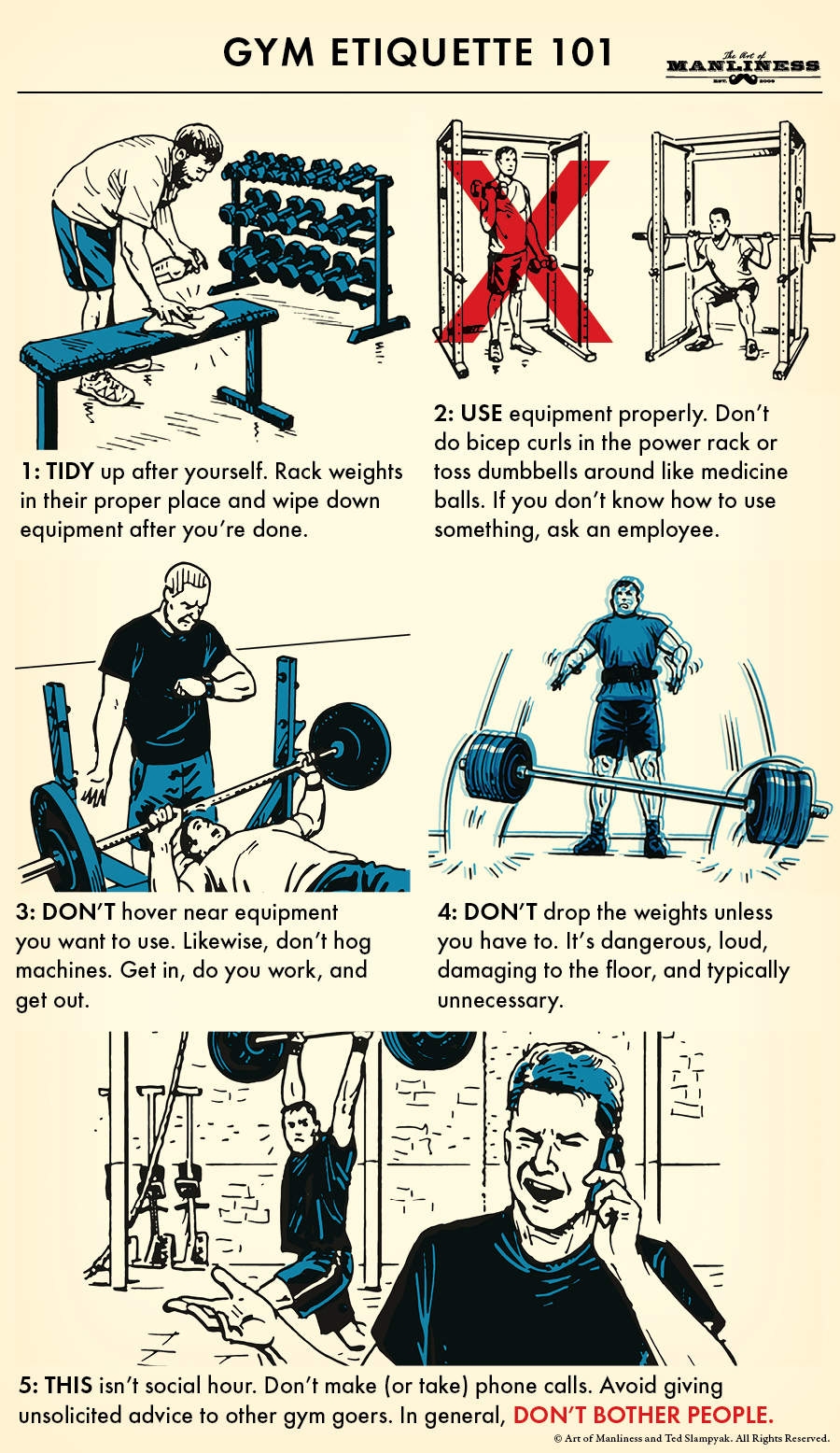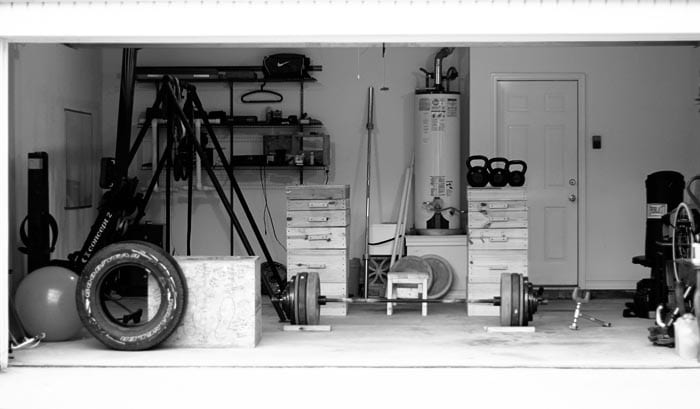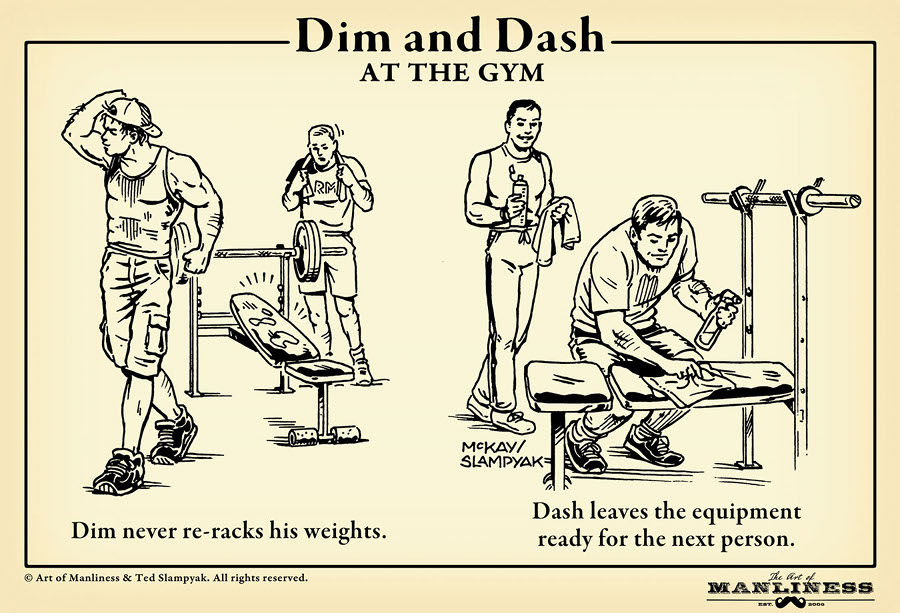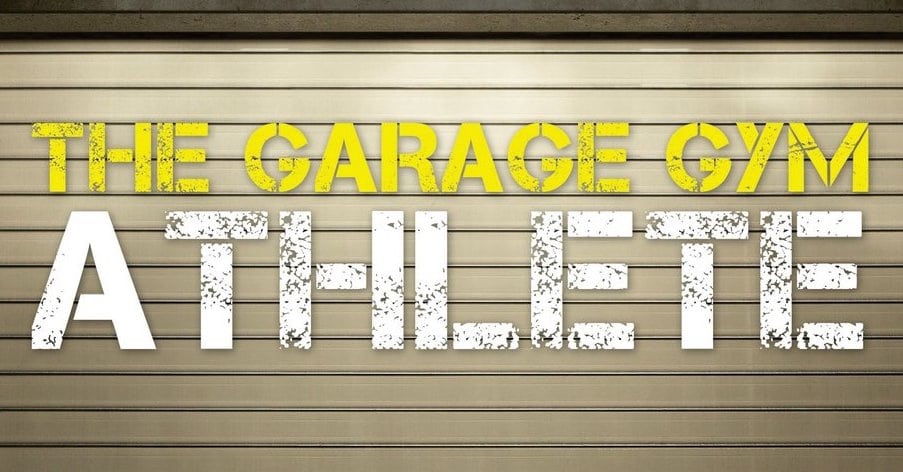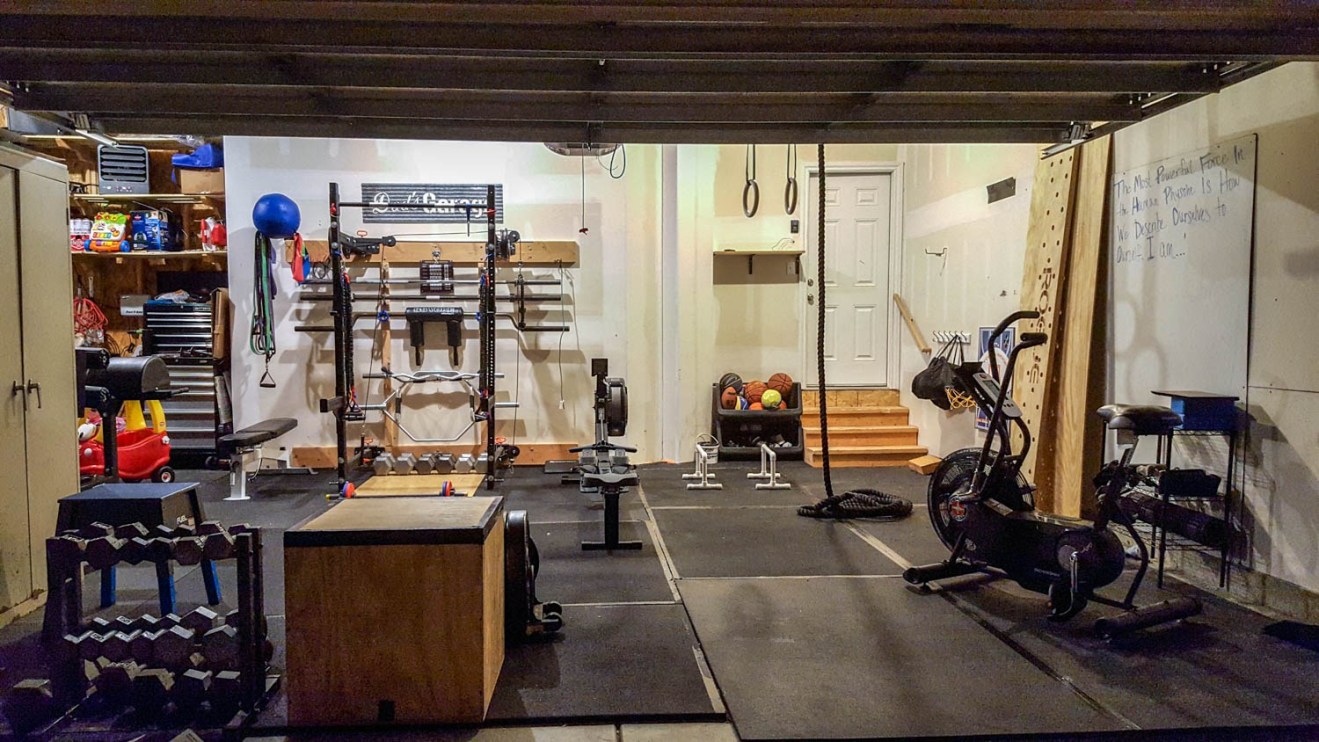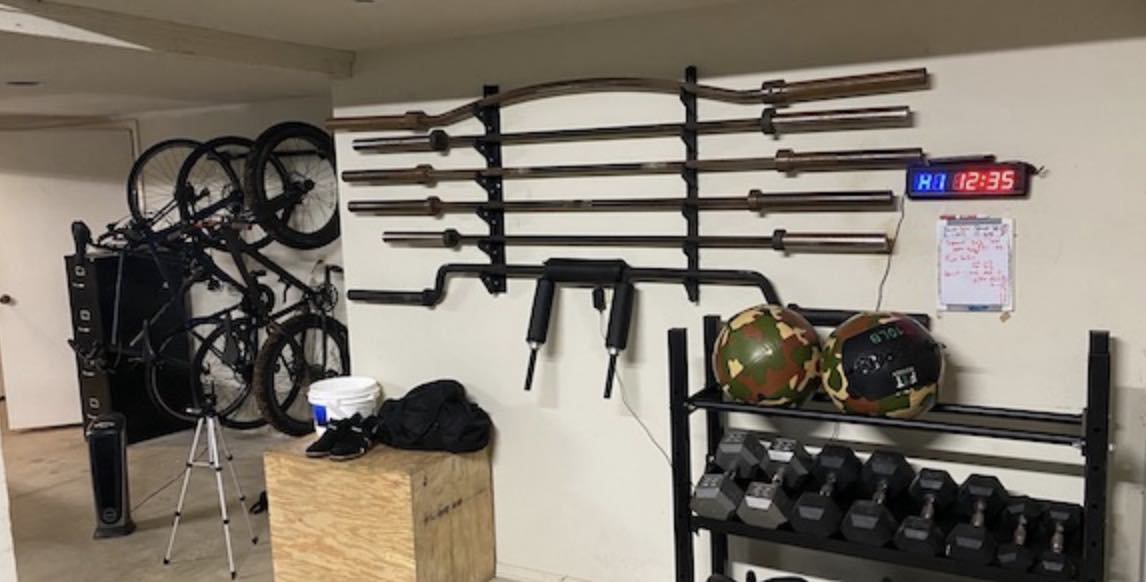If you’re like thousands of folks across the country, the beginning of a new year — and its attendant resolution making — has prompted you to think about joining a gym.
Alternatively, maybe you’re contemplating fleeing the new year’s crowds and creating your own gym in the garage.
Or, perhaps you’re feeling stuck deciding between these two ideas and can’t make up your mind about which course of action to take. If so, this article is for you.
Six months ago, Kate and I canceled our gym memberships and created a home gym in our garage. Gus starting preschool this year put an end to our lazy mornings, where the whole family would meander to the gym together, and the grownups began their workday at noon. Kate and I had to figure out a way to get both our workouts in before taking Gus to school at 8am and starting in on our new early work schedule.
A garage gym seemed like it would be a convenient time saver, shaving off the ten-minute drive to and from the commercial gym. And time concerns aside, I had already been contemplating the switch for other reasons. The gym I belonged to included a quasi-CrossFit “box” in one corner, and the CrossFitters sometimes filched barbells from the regular weight area. Plus, trainers often commandeered the squat racks for their clients. I thus frequently couldn’t do the exercises I wanted to do when I wanted to do them — couldn’t do my workouts exactly how they were planned and designed — and this was starting to really bug me.
So last summer the McKays got a squat rack, barbell, and Airdyne bike and set up our own garage gym.
Six months later, I’m still working out in the garage, and Kate just rejoined our old gym. Why we ended up making different choices, the pros and cons of garage versus commercial gyms, and why you might choose one path or the other is what we’ll outline today.
The Pros and Cons of Garage Gyms
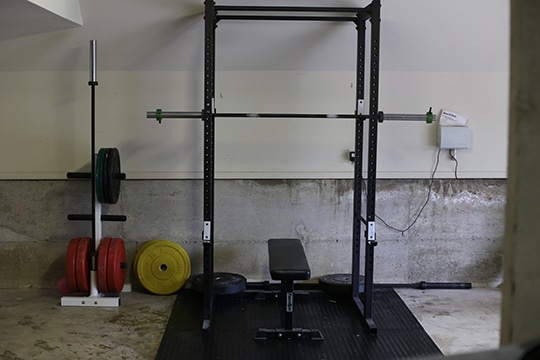
I got my set-up at Fringe Sport. Quality gym equipment at an affordable price compared to other gym equipment companies out there. It’s the company Atomic Athlete uses to outfit their gym.
The Pros
- Save money. By dropping your monthly membership gym fees (which likely go towards a lot of amenities and services you don’t even use — like Zumba class), you’ll very likely save money — possibly a whole lot of money. There are some caveats though — see the callout section below.
- No waiting for equipment. There’s no one else using your personal gym, so there’s never anyone passive aggressively standing a few feet away, trying to stare you out of the squat rack.
- Let it all hang out. Even if you don’t go to the gym to preen, and you’re mostly oblivious to the opinions of others, a garage gym still gives you more privacy and leeway to do as you please. Wear what you want (or nothing but your ranger panties if you please), fart at will, and give your loudest primal yell when you reach a new PR. No one’s going to ring the lunk alarm and escort you from the premises.
- No commute. Just walk out your bedroom, through the kitchen, and into the garage. In 30 seconds, you’re at the gym and ready to get your lift on.
- Fresh air. At a globo gym, you’re trapped inside a fluorescent-lit box. With a garage gym, you can throw up the door, let the fresh air in, and even do some of your exercises on the driveway beneath the sun and stars.
- Open 24/7. Holidays, late nights, ungodly early in the morning — your garage gym is always open and waiting.
- Get your kids interested in fitness. At our membership gym, our kids were confined to the childcare area and not allowed out on the floor. But in the garage, they can see exactly what dad’s been up to all this time. When I’m actually working out, I like to be alone, but we often hang out as a family outside and in the garage, and Gus and Scout have been super interested in the workout equipment and how to use it. I’ve been teaching Gus about squat and deadlift form, and he does his own made-up workouts. He’s already making goals to deadlift 500 lbs one day. Even little Scout likes to swing around our 1-lb “plates” and say she’s “working out.”

Iron plates and Airdyne. I got the Airdyne on Amazon.
The Cons
- Limited equipment. Unless you’ve got a lot of room and uber deep pockets to outfit your garage gym with tons of different cardio machines and pieces of equipment, you’re probably going to have just a few things at your disposal. While a barbell, plates, squat rack, and bench is just about all you need, in my opinion, others like having choices.
- Garage space. If you’ve got a single-car garage, you’re likely going to need to park your vehicle outside indefinitely. If you and your wife have two cars, and a two-car garage, one of ya is going to have to park their vehicle in the driveway (it’s probably going to be you).
- Variable temperature. The garage can get very hot in summer, and very cold in winter. These conditions are prime for building your Spartan toughness, but the thought of going out to a freezing garage may make it harder to get out of bed.
- Sole responsibility. If something’s dirty or needs fixing, it’s always your job to remedy it.
- Distraction. With the benefit of your gym being attached to your house, comes a drawback too. It can be harder to leave behind the responsibilities and cares of home life, both literally and psychologically. Your kids or wife may want to talk to you during your workout, and you may simply have a hard time transitioning your mindset from piddling around the house to pumping iron. Though a garage gym is much easier to access, this can paradoxically make it more difficult to get out the door, and more tempting to cut your workout short and go back inside. Going to a membership gym requires a more active commitment, and once you’re there, it can be easier to get into the right state of mind.
Will You Save Money By Switching to a Garage Gym?
One of the reasons many folks cancel their gym membership to start a garage gym is to save money. The idea of never again paying a monthly fee to work out is a pretty desirable one, and garage gyms will very likely save you a good deal of cash. But how much, and how long it will take you to see those savings depends on a couple of factors.
First, it depends on how much you’re currently paying for your gym membership. Monthly fees can range anywhere from $10-$225 (there are seriously gyms in NYC that cost that much — plus $550 upfront to join!).
Second, it depends on how much you spend on equipment for your garage gym. How much stuff are you getting? Are you buying new, high-end equipment or scouring garage sales and Craigslist for the used variety? Depending on your purchasing decisions, outfitting your garage gym could cost you anywhere from $500-$5,000k+.
So let’s look at how the costs of switching to a garage gym break down over 30 years in a few different scenarios:
- Paying $25/month for gym membership→Buying garage gym equipment for $500:
- Would-be cost of gym membership over 30 years: $9,000
- Money saved by switching to garage gym: $8,500
- Point at which you start saving money: 1.7 years
- Paying $50/month for gym membership→Buying garage equipment for $2,500:
- Would-be cost of gym membership over 30 years: $18,000
- Money saved by switching to garage gym: $15,500
- Point at which you start saving money: 4.2 years
- Paying $10/month for gym membership→Buying garage equipment for $4,000:
- Would-be cost of gym membership over 30 years: $3,600
- Money saved by switching to garage gym: -$400
- Point at which you start saving money: 33.3 years
As you can see from these examples, in most cases garage gyms can indeed save you a lot of money and in a reasonable timeframe. However, if you drop a bundle on your equipment, it’s possible you won’t save any money at all, especially if you’re not paying much for your gym membership now.
And of course, these numbers don’t factor in the possible need to get, say, your treadmill fixed or replaced sometime over the course of three decades. They also suppose that you won’t change your mind and rejoin the gym before you’ve recouped your equipment costs.
So will you save money by dropping your gym membership and switching to a garage gym? Very likely, with time. But it’s not an absolute certainty.
The Pros and Cons of Membership Gyms
The Pros
- Ample amenities and services. Depending on the type of gym you join, they often have a variety of amenities available, from towels to personal trainers to smoothie bars. There’s also someone else cleaning and repairing the equipment, so you don’t have to worry about tidying the place up yourself or hiring someone to fix your treadmill. (This doesn’t mean you shouldn’t do your part to practice good gym etiquette though, especially in putting weights away and wiping your sweat from the machines!)
- Childcare. This is really a huge one. Being able to drop your kids off while you work out is super convenient. The benefit is especially evident on Saturdays; weekends can sometimes drag on when you have kids, and hauling everyone to the gym for an hour breaks up the morning nicely. Some gym childcares also offer “Parents Night Out,” making it easier for you and the Mrs. to have a regular date night.
- Variety of equipment. Even if your workouts consist largely of barbell training, it can be nice to mix up your cardio by using different machines (elliptical, treadmill, rower, etc.). So too, you’ll definitely appreciate the variety if you become injured, can’t do your normal workout, but still want to exercise your body somehow. Your garage gym may have no equipment that’s viable for your gimp-legged self to use, while the commercial gym has an arm “bike” and a pool to paddle around in.
- Climate control. In the heat of summer and iciness of winter, it’s always a nice, consistent temp.
- Social interaction. Commercial gyms can be a source of new friends, especially smaller establishments like powerlifting or CrossFit gyms where you see the same people consistently and there’s a good amount of camaraderie. For someone who works at home like I do, even making a little small talk with folks at my larger gym was a nice way to reconnect with humanity!
- Focus/mindset. In some ways, having to get dressed and go drive somewhere to exercise is annoying, but such a ritual can also be psychologically useful — transitioning you away from the cares of home and job, and into workout mode. Once you cross through the gym’s doors, you know it’s time to get to work.
The Cons
- Crowds occupying the equipment. It’s pretty dang annoying when you want use a certain piece of equipment and someone is squatting (literally or figuratively) on it.
- Commute time. You might be sinking up to 30 minutes of your life each day into driving to and from your gym. If you work out 5X a week for 30 years, that’s 162 full days of your life sunk into a gym commute.
- Gym patron interruptions. Sure, you might be interrupted by your family when you work out in a garage gym, but you can also be interrupted by your fellow gym patrons at the commercial variety. There was a lady at my gym who frequently wanted to talk to me for 10 minutes at a time, which introduced a significant and unplanned break into my routine, and sometimes prevented me from getting in my full workout before I needed to go home.
- Set open/close hours. Some gyms are open 24/7, but others have hours that might not work with your own schedule. They may also close on holidays, or due to inclement weather, when you’re still itching to lift.
Which Should You Choose?
Kate rejoined our old gym a few weeks ago. The weather was finally getting cold, and she wanted the option of running on the treadmill sometimes. So too, she missed the childcare on Saturdays and the variety of equipment available. The biggest reason she went back, however, was psychological — the garage felt dark and confining and didn’t put her in the right mindset for working out. She found herself dragging her feet about getting out of bed to go down there, and thus running late and having to cut her workouts short. In contrast, she feels the bright lights, music, and open space of the commercial gym helps her get going in the morning.
But I myself couldn’t be happier with our garage gym. It feels like my little sanctuary. I never have to worry about someone using a piece of equipment I need, and not being able to do my full workout. I actually feel like I can get more in the zone in the garage than I ever could at the commercial gym.
Do our different decisions have a gendered component? That might have a little to do with it. Before I left the membership gym, a lady trainer said, “You’re probably going to like it, but come winter when it gets cold out, your wife will be back.” And her words were perfectly prophetic. Men, on average, likely have a higher tolerance for working out in cold, dark, spartan garages than women do.
But it also has to do with our differing goals and fitness interests. Kate’s workouts center on keeping herself healthy for running, and she thus likes having a variety of equipment to cross-train and do mobility work on. I’m all about weightlifting and getting stronger, and all I really need to be happy is a squat rack, a barbell, and space to bend up and down.
Your decision as to joining a membership gym or creating your own garage gym will similarly come down to your goals, personality, and which of the pros and cons above are most salient to you.
If you’re on the fence, my advice would be to start small and simple with your garage gym. If can be tempting to outfit your gym right out the gate with every conceivable piece of equipment you might desire. But if it turns out that doing the garage gym thing isn’t for you, you’re going to have wasted that money. So do an experiment for a couple months with the absolute minimal amount of equipment you can get by with — like just a used squat rack and barbell. If you like it, buy a few more things gradually. If you don’t, hopefully you can unload the equipment to someone else on Craigslist who’s decided it’s high time he quit the commercial gym to work out in the garage.
Be sure to check out our podcast on becoming a garage gym athlete:



